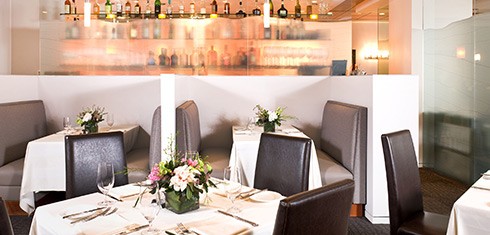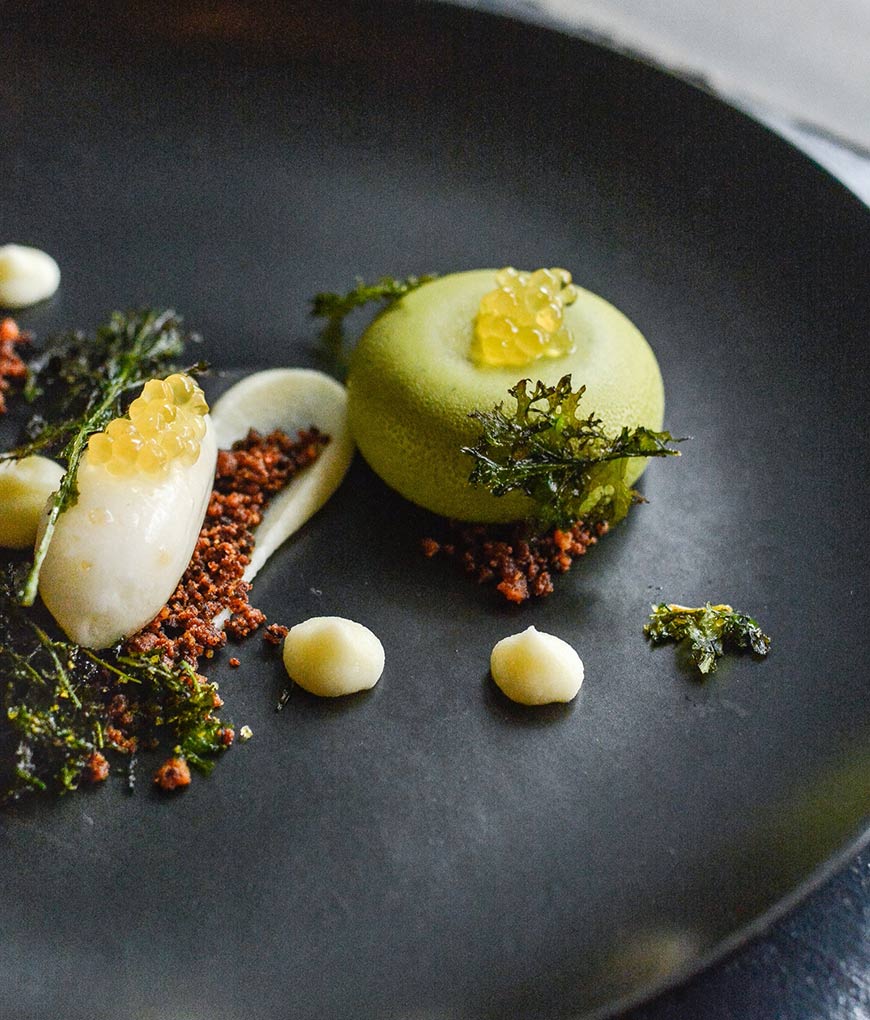BY JESSICA VOELKER, JULIET IZON, AND ADAM ERACE
Major American cities have a virtual cornucopia of favorite foods, but in recent years, sous vide has become a unifying culinary force. From coast to coast, chefs in the country’s top kitchens have added sous vide to their kitchen tool kits and created some remarkably innovative dishes. We’ve already explored the East Coast in this series; now we’re looking at the best things to eat in New Orleans, Chicago, and Las Vegas.
New Orleans
Nobody can deny the pleasure of beignets blanketed in powdered sugar or the shrimp remoulade at Galatoire’s. But while these regional dishes are woven deep into New Orleans’ culinary DNA, the city has spent the past decade evolving way beyond those totems.
As in any other modern restaurant town, sous vide is a popular cooking method in the Big Easy, whether for dry-aged beef, like at neo-steakhouse Doris Metropolitan (620 Chartres St.), or … honey mustard.
At Square Root (1800 Magazine St.), a beeswax-infused cream is a key element of chef Brad Henley’s honey mustard sauce. “Some of the cream is cold-infused with beeswax in a vacuum-sealed bag for 24 hours, while the rest is hot-infused sous vide at 60 degrees for two hours,” Henley explains.
“When we combine them, the flavor is incredibly delicious. The sous vide technique allows us to let our customers taste something they have only ever smelled before.” At Shaya (4213 Magazine St.), “We use sous vide for several of our dishes,” says Alon Shaya, whose Israeli restaurant earned him a James Beard Award last year. One of his favorites involves whole cabbage cooked at 185 degrees for eight hours with wine, lemon, and butter. Shaya portions and roasts the cabbage in his wood-burning oven. “It reminds me in flavor of stuffed cabbage my grandmother used to make—but the texture is what sets it apart, due to the sous vide process.”
Chicago
The Windy City is the cradle of so-called modernist cooking in America, and Grant Achatz’s Alinea (1723 N. Halsted St.) is the standard-bearer, its obsession with progressive technique trickling down through Chicago’s culinary scene to restaurants like Beverly Kim and Johnny Clark’s Parachute (3500 N. Elston Ave.).
When Achatz’s Next (953 W. Fulton Market), which changes its concept every four months, did a steakhouse theme in 2014, all the beef was cooked sous vide. Chef Ryan McCaskey uses the technology at his restaurant, Acadia (1639 S. Wabash Ave.). “Techniques with sous vide are helpful in controlling the product,” McCaskey says. “Temperature and even cooking are important with the high level of execution we need.” He uses sous vide for most of his proteins (including a turbot with “scales” of leek, potato, and truffle), but also vegetables. In one dish, McCaskey cooks sweet potatoes in carrot juice to create a more dynamic flavor before spinning the spuds into a bright orange purée.
Las Vegas
Spend a few minutes browsing menus in Vegas’ upper-echelon restaurants and you might think this city of excess is solely responsible for keeping the Wagyu industry in business. Sous vide is the preferred method for cooking the pampered beef at Wynn; there, chef Devin Hashimoto of Mizumi (3131 S. Las Vegas Blvd.) uses the method to season his Wagyu galbi (Korean-style short ribs) with the sweetness of Asian pear and salinity of soy sauce, while David Walzog at SW Steakhouse (3131 S. Las Vegas Blvd.) likes the precision that keeps his peppered Chateaubriands and chile-rubbed double-cut rib-eyes perfectly cooked every time.
But Vegas chefs are using sous vide for much more than just beef. At Libertine Social (3950 S. Las Vegas Blvd.), the menu includes harissa-rubbed mussels and Parmesan churros, and chef Jamaal Taherzadeh does egg yolks, pork chops, and even a whole Petaluma chicken sous vide. “The difference between chicken that is cooked at 144 degrees and 146 degrees is huge,” says Taherzadeh. “A two-degree increase completely changes how moist the meat is and the overall texture.”
More In This Series

Taste the Nation: East Coast
Searching for culinary innovation or modern takes on traditional foodie favorites? Check out our guide to find the best sous vide dishes along the East Coast.
Buy the Magazine
Buy NowDedicated to the Art & Science of Sous Vide
The first publication devoted to the art and science of sous vide cooking, featuring innovative recipes, visual inspiration, expert techniques for cooking sous vide at home, and exclusive interviews with world-class chefs.

